Greg Olson - The Ioway in Missouri
Here you can read online Greg Olson - The Ioway in Missouri full text of the book (entire story) in english for free. Download pdf and epub, get meaning, cover and reviews about this ebook. year: 2008, publisher: University of Missouri Press, genre: Home and family. Description of the work, (preface) as well as reviews are available. Best literature library LitArk.com created for fans of good reading and offers a wide selection of genres:
Romance novel
Science fiction
Adventure
Detective
Science
History
Home and family
Prose
Art
Politics
Computer
Non-fiction
Religion
Business
Children
Humor
Choose a favorite category and find really read worthwhile books. Enjoy immersion in the world of imagination, feel the emotions of the characters or learn something new for yourself, make an fascinating discovery.
- Book:The Ioway in Missouri
- Author:
- Publisher:University of Missouri Press
- Genre:
- Year:2008
- Rating:4 / 5
- Favourites:Add to favourites
- Your mark:
The Ioway in Missouri: summary, description and annotation
We offer to read an annotation, description, summary or preface (depends on what the author of the book "The Ioway in Missouri" wrote himself). If you haven't found the necessary information about the book — write in the comments, we will try to find it.
Although their ancestors came from the Great Lakes region and they now live in several midwestern states, the Ioway (Baxoje) people claim a rich history in Missouri dating back to the eighteenth century. Living alongside white settlers while retaining their traditional way of life, the tribe eventually had to make difficult choices in order to survivechoices that included unlikely alliances, resistance, and even violence.
This is the first book on the Ioway to appear in thirty years and the first to focus on their role in Missouris colonial and early statehood periods. Greg Olson tells how the Ioway were attracted to the rich land between the Mississippi and Missouri rivers as a place in which they could peacefully reside. But it was here that they ended up facing the greatest challenges to their survival as a people, with leaders like White Cloud and Great Walker rising to meet those demands.
Olson draws on interviews with contemporary tribal members to convey an understanding of Ioway beliefs, practices, and history, and he incorporates reports of Indian agents and speeches of past Ioway leaders to illuminate the changes that took place in the tribes traditional ways of life. He tells of their oral traditions and creation stories, their farming and hunting practices, and their alliances with neighboring Indians, incoming settlers, and the U.S. government. In describing these alliances, he shows that the Ioway did not always agree among themselves on the direction they should take as they navigated the crosscurrents of a changing world, and that the attempts of some Ioway leaders to adapt to white society did not prevent the tribes descent into poverty and despair or their ultimate removal from their lands.
As modern Ioway in Kansas and Oklahoma work to recover the history of their peopleand as local historians recognize their important place in Missouri historyOlsons book offers a balanced account of the profound effects on the Ioway of other tribes, explorers, and settlers who began to move into their homelands after the Louisiana Purchase. Written for a general audience, it is a useful, accessible introduction to the changing fortunes of the Ioway people in the era of exploration, colonialism, and early statehood.
Greg Olson: author's other books
Who wrote The Ioway in Missouri? Find out the surname, the name of the author of the book and a list of all author's works by series.

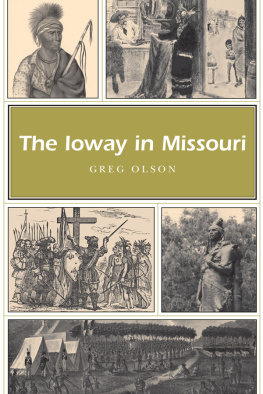

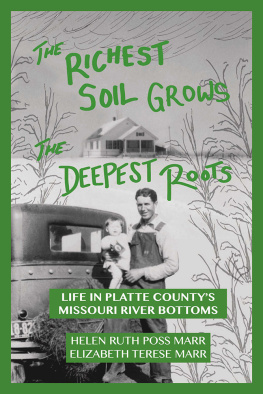

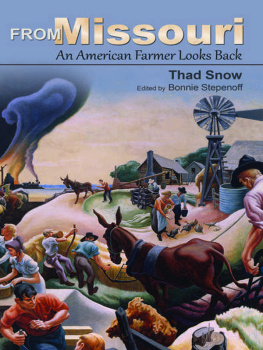
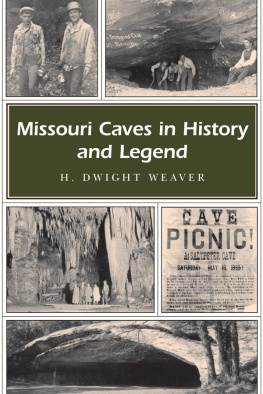


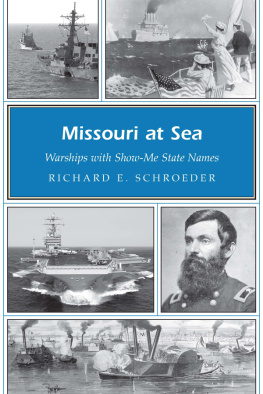


 This paper meets the requirements of the American National Standard for Permanence of Paper for Printed Library Materials, Z39.48, 1984.
This paper meets the requirements of the American National Standard for Permanence of Paper for Printed Library Materials, Z39.48, 1984.